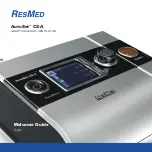
petsafe.com
27
• Have small pieces of your pet’s favorite treats available.
• Have your pet’s favorite play toy available.
• Stage some distractions to tempt your pet to enter the static correction zone. Start with temptations that are of lower value for your pet, and
work your way up. It is typically harder for pets to resist temptations that are close by than those further away:
- Have a family member cross from inside the pet area to outside of it.
- Place a ball, treat or toy outside of the pet area.
- Have a neighbor walk their pet outside of the pet area.
• Gradually increase distraction level.
Never coax or call your pet out of the pet area.
Steps:
1. With full control of your pet on a leash, have the distraction presented.
2. If your pet does not move toward the distraction, praise and offer a treat.
3. If your pet does react to the distraction, allow him or her to go into the static correction zone while still on the leash.
4. Help your pet back into the pet area if he or she does not turn back after 2 seconds.
5. Treat and praise your pet anytime he or she comes back into the pet area with or without help.
6. Repeat this process with other distractions. Use other family members during this process.
7. If your pet does not respond to the static correction, confirm that the receiver collar is fitting properly according to Step 11 on page 23.
8. If the receiver collar is fitted properly and if your pet does not respond to the static correction, increase the static correction level
by one setting.
Phase 4
Days 9 Through 14—Unleashed Supervision
Training sessions should start at 10–15 minutes, gradually increasing to over an hour.
Your pet is ready for this step only when he or she clearly avoids the entire static correction zone, regardless of any distractions or temptations.
During this step, do not leave your pet unattended.
Goal:
To give your pet free run of the pet area off the leash.
Setup:
• Adjust the static correction level to the permanent setting appropriate for
your pet.
• Put a separate non-metallic collar on your pet’s neck below the receiver
collar. Keep a leash close by to use in case your pet escapes the pet area.
Steps:
1. Enter the pet area with your pet wearing the receiver collar.
2. Walk around the yard and play with your pet, staying within the pet area
at all times (
12D
).
3. Preoccupy yourself with another task in the yard while watching your pet.
4. Should your pet escape, take the receiver collar off and lead him back
into the pet area.
12D










































